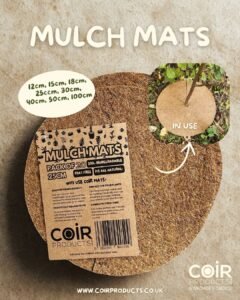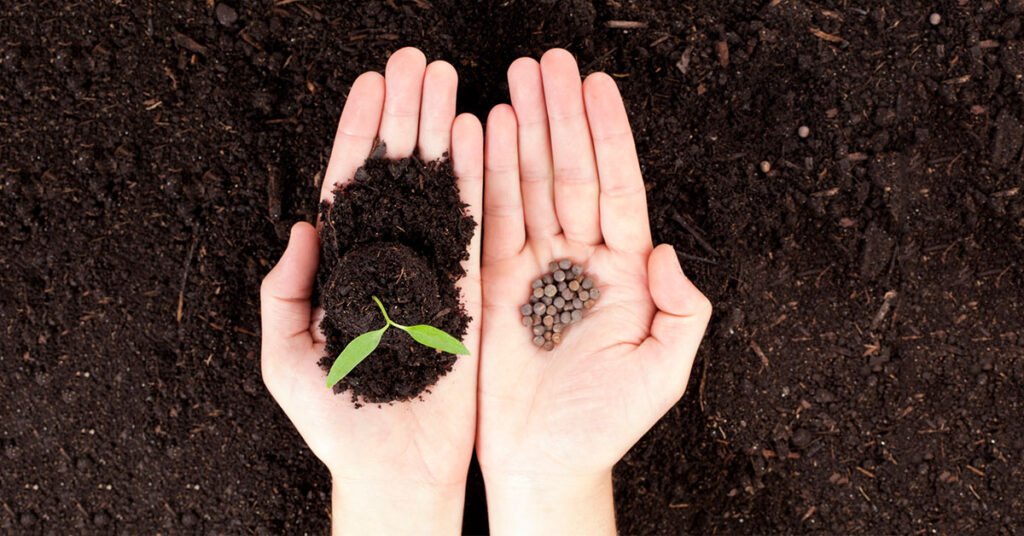
Transform Your Garden with Biodegradable Mulch Mats
In a world where every choice we make ripples through our planet and our personal sanctuary, your garden deserves more than the ordinary. It deserves

Do you usually save seeds from your garden plants?
Collecting seeds from your own garden to sow next season can seem like a little extra work, but it’s a lot of fun and a great way to propagate your garden. You can also share those seeds with your family, friends, or neighbours.
Seedheads are usually ready to gather by late summer, around August, and into fall. You can save seeds from different vegetable and flower plants. Seeds also come in different shapes and forms, including as pods, cones, berries, nuts, capsules, and winged seeds, among others. Therefore, collecting and storing seeds needs some planning and careful handling.
If you are looking to collect and store seeds, read on for some useful tips and suggestions.

Deciding which seeds to save
Try to use seeds from open-pollinated or heirloom varieties, so that you can grow a plant that’s similar to its parent plant.
Some vegetables that are easy to grow and save seeds from include tomatoes, peppers, peas, and beans. If you are completely new to collecting your own seeds, these are great to start off with.
Avoid hybrids, such as F1 hybrids, as they don’t give the same quality each year.
Avoid biennial plants.
Avoid those plants that cross-pollinate more easily with different varieties, as you would not be certain of what you’re going to get. If you do want to use them, isolate these plants early on.
Recognise those seeds that are viable. For example, with beans and peas, seeds are viable when they turn brown at the end of the harvest season and can no longer be eaten. The seeds within the pods are still dry and can be saved.
Identify and choose plants that perform the best in your garden. Look for plants that are healthy, to ensure good quality seedlings and plants.
Collecting and storing seeds
You need to collect seeds as soon as seedheads ripen, and before they are dispersed. But seedheads can ripen quickly. So keep a close watch. Seeds harvested while they are immature may not germinate.
Once the seeds are extracted, clean off any surrounding material that is attached to the seed. Get rid of any chaff and debris, as well as any damaged seeds. Some seeds can be stored in a paper bag or envelope to dry. Leave them on a warm windowsill or in an airing cupboard.
Here are some seeds you can easily collect and store
Tomatoes: Scrape out the seeds into a container, cup, or jarp, and add some water. Cover the top with a paper towel, and leave the seeds in a warm spot yet out of direct sunlight. Let the seeds soak for 2-3 days. After that, strain and rinse the jelly from the seeds, and you will see all the viable seeds at the bottom.
Beans and peas: With beans and pease, seeds are ready for harvesting when they turn brown and dry. Make sure to pick the pods when they are dry as they will disburse. Pull off the pods when the plant has dried out, open each pod, and collect the seeds. Once the seeds are dry, store them in a labelled envelope.
Lettuce: Gather lettuce seeds when the seed pod has formed and dried out. You might need to plan growing lettuce early in the season as the seedheads form in the summer.
Peppers: cut the top of the pepper open, and scoop out the seeds. Leave the seeds on a plate or town, or kitchen towel or newspaper and let them dry for 1-2 weeks, under direct sunlight. Once dried, put the seeds in properly labelled seed packets.
As always, getting to know the different plants and how and when their seeds can be collected is important. There are some specific guidelines on collecting and storing seeds here and here. Try to plan ahead so you make the most of collecting seeds. After all, not only is it fun, it’s also a great way to continue your gardening legacy.
Do you collect your own seeds? We would love to hear.

In a world where every choice we make ripples through our planet and our personal sanctuary, your garden deserves more than the ordinary. It deserves

We continue our special series highlighting grower’s experience of using coir with Kay @brook_cottage_. With a love for growing a mix of flowers, fruits, and